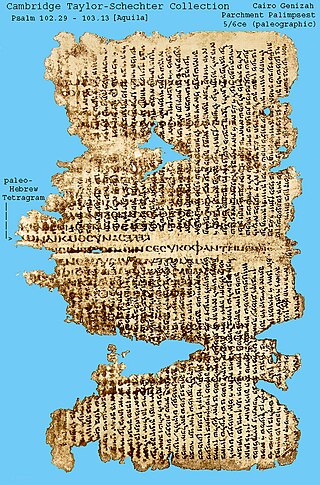AqTaylor
The siglum AqTaylor (also: Taylor-Schechter 12.186 + AS.78.412; 12.187; 12.188; vh203, TM 62306, LDAB 3469) are fragments of a palimpsest containing a portion of the Palestinian Talmud in upper script,[1] and part of the Book of Psalms of Aquila's Greek translation of the Hebrew Bible in lower script.[2] This latter is a Greek biblical manuscript written in codex form. This manuscript has been dated after the middle of the fifth century C.E., but not later than the beginning of the sixth century C.E.
The topic of this article may not meet Wikipedia's general notability guideline. (January 2021) |
